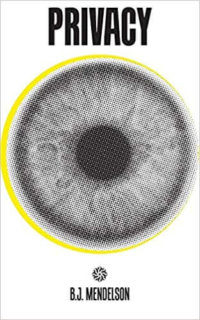Privacy and How to Get It Back

Privacy and How to Get It Back. B.J. Mendelson. London: Curious Reads, 2017.
With the ubiquity of information technology in our lives, the question of privacy is often neglected by consumers, citizens, private companies, and governments. In Privacy and How to Get It Back, Mendelson pulls back the curtain to show us how government regulations are insufficient to protect us from private companies exploiting our data. He also offers practical tips of how we can protect our privacy in this age of data and advocates citizens to curb the power of Silicon Valley.
As Mendelson points out, the federal government has been collecting data on the population since World War I with the Espionage Act that made it illegal for Americans to provide information about American activities to the enemy of the country. This was not only in response to America entering World War I but also in reaction to the growing immigration population in the country. Private corporations, whether Western Union or ATT, have helped the government to have access to their networks so the government could monitor communication.
Today, the Federal Trade Commission categorizes data into twelve types: 1) identifying (e.g., name, address), 2) sensitive (e.g., social security), 3) demographic, 4) court and public records, 5) social media, 6) home and neighborhood (e.g., mortgage payments), 7) general interest (e.g., clothes, entertainment), 8) vehicle, 9) financial, 10) travel, 11) purchase behavior (i.e., how much you spend, the type of things you buy, and your preferences), 12) health. Mendelson walks the reader through how private companies make money from people’s data, whether transparently or secretly (e.g., malware). He explains the nexus between technology companies, advertisers, and insufficient government regulation that allows our data to be mined, exploited, and sold to third parties without our knowledge.
An important distinction that Mendelson makes is between static and dynamic data: the former is a discrete moment in time while the latter is continuous (e.g., a smart watch monitoring your blood pressure). It is not clear yet who stores this data, has access to it, and to whom it is being sold. Technological advances are such that, with Wi-Fi networks, companies can see whether you are still breathing or how often you use the bathroom at work. By using the Internet, and embracing the lifestyle of the “Internet of thing” with its cloud-based storage, we should not expect any sort of privacy; rather, we should assume that we are being monitored, surveilled, and watched by companies for their own profitable ends.
To navigate this world of complete transparency, Mendelson offers some practical advice of how to use the Internet to protect your privacy (e.g., websites like “Just Delete Me,” “Tor,” and “DuckDuckGo.com”). He also suggests ways to devise passwords to protect your most important information and even advocates lying to companies when filling out security questions, since the more truthful you are, the easier you will be hacked. If you are hacked, you should change your password, sign up for a credit monitoring service, and wait and watch to see how your data is being used.
At the government level, Mendelson writes that the European Union is a leader in data protection and privacy, with the United States far behind, although it leads the world in information technology. And while there is not much citizens can do about the federal government monitoring, they can influence state government in how privacy is protected from corporations. While we live in a world where privacy cannot be assured, we can take action to see that our data is not being used without any protection or compensation.
Privacy and How to Get It Back is written in a series of essays that are accessible and enjoyable to read, informing us the dangers of the technological world in which we live and what we can do to best protect our privacy. Rather than returning to the stone age or your compound in Idaho, Mendelson offers a path of common sense protection in this era of the “Internet of things.” Ultimately government regulation will be required to ensure that our data is protected, but until that point, we need to know how technology companies and advertising exploit our data for their profit. This book does this, and, by doing so, does a great service in helping us reclaim back some of privacy.




